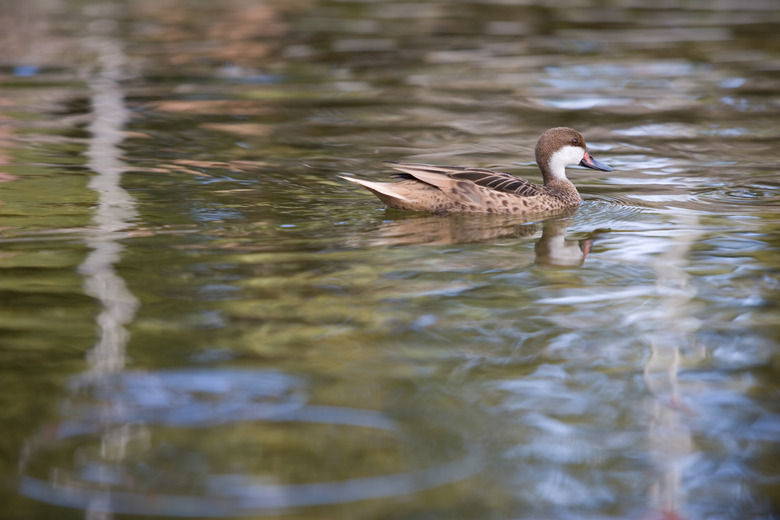Climate In A Freshwater Biome
Except for freshwater biomes in the polar regions of the Earth, most of these biomes generally experience moderate climates with significant rainfall, as they encompass areas that support large bodies of water like ponds, lakes, rivers and streams, as well as salt-free wetlands or marshy areas. The water plays a significant role in the biome's climate.
TL;DR (Too Long; Didn't Read)
The average temperatures in these biomes differ based on geographic location and the seasons of the year, but temperatures generally range from 35 degrees Fahrenheit in the winter to 75 degrees F in the summer. Freshwater biomes cover nearly a fifth of the Earth and contain nearly 80 percent of the world's freshwater sources.
The Biome's Climate
The Biome's Climate
Weather refers to changing daily atmospheric conditions, while climate refers to the average weather conditions over a period, usually a year. Average temperatures in a freshwater biome in the summer range from 65 to 75 degrees F, and from 35 to 45 degrees F in the winter. The location of the freshwater biome determines its average climate. The Florida Everglades — for example and the world's largest freshwater biome — can receive up to 60 inches of rain per year in its wet season: the summer. Winters are predominately dry and cool.
Water, Water Everywhere
Water, Water Everywhere
Freshwater biomes typically develop around small ponds, creeks, rivers, lakes, marshes and wetlands. Marine biomes often mistakenly get included in the freshwater biome, but they don't belong in them because they contain salty sea water. Like in the Florida Everglades, many freshwater biomes meet marine biomes in areas called estuaries, where salt and fresh water merge. While marine biomes are much larger than freshwater biomes, both are equally important for the ecosystem.
Changing Climates
Changing Climates
Climatic conditions for freshwater biomes in the tropical areas of the Earth are vastly different from those in the polar regions. Seasonal changes also affect the temperature, as winter months in the Arctic region tend to freeze the water. In the summer, tropical waters in freshwater biomes can reach temperatures up to 75 degrees F. The depth of the water in a freshwater biome also affects the water's temperature — and plays a part in the overall climate of the biome. This is most obvious in lakes, where temperature is higher at the surface of the water due to sunlight heat, when compared with deeper parts of the lake.
Clean, Fresh Water
Clean, Fresh Water
Protecting freshwater biomes and their climates are important for all living creatures. Most of the water humans drink and use for bathing and other activities comes from freshwater sources in these biomes. Freshwater biomes also contain diverse flora and fauna, such as algae, that serve the rest of the food chain.
Plants that thrive in freshwater are a food source for animals and provide oxygen through photosynthesis, especially in the summer. Freshwater fishes that feed on plants and insects are often a main food source for humans as well. From a human perspective, freshwater biomes not only provide food and water, but are also home to thousands of species of fish, animals and plants. Protecting them from climate change helps to secure humans' survival.
Cite This Article
MLA
Santhosh, Lakshmi. "Climate In A Freshwater Biome" sciencing.com, https://www.sciencing.com/climate-freshwater-biome-23959/. 30 April 2018.
APA
Santhosh, Lakshmi. (2018, April 30). Climate In A Freshwater Biome. sciencing.com. Retrieved from https://www.sciencing.com/climate-freshwater-biome-23959/
Chicago
Santhosh, Lakshmi. Climate In A Freshwater Biome last modified March 24, 2022. https://www.sciencing.com/climate-freshwater-biome-23959/
